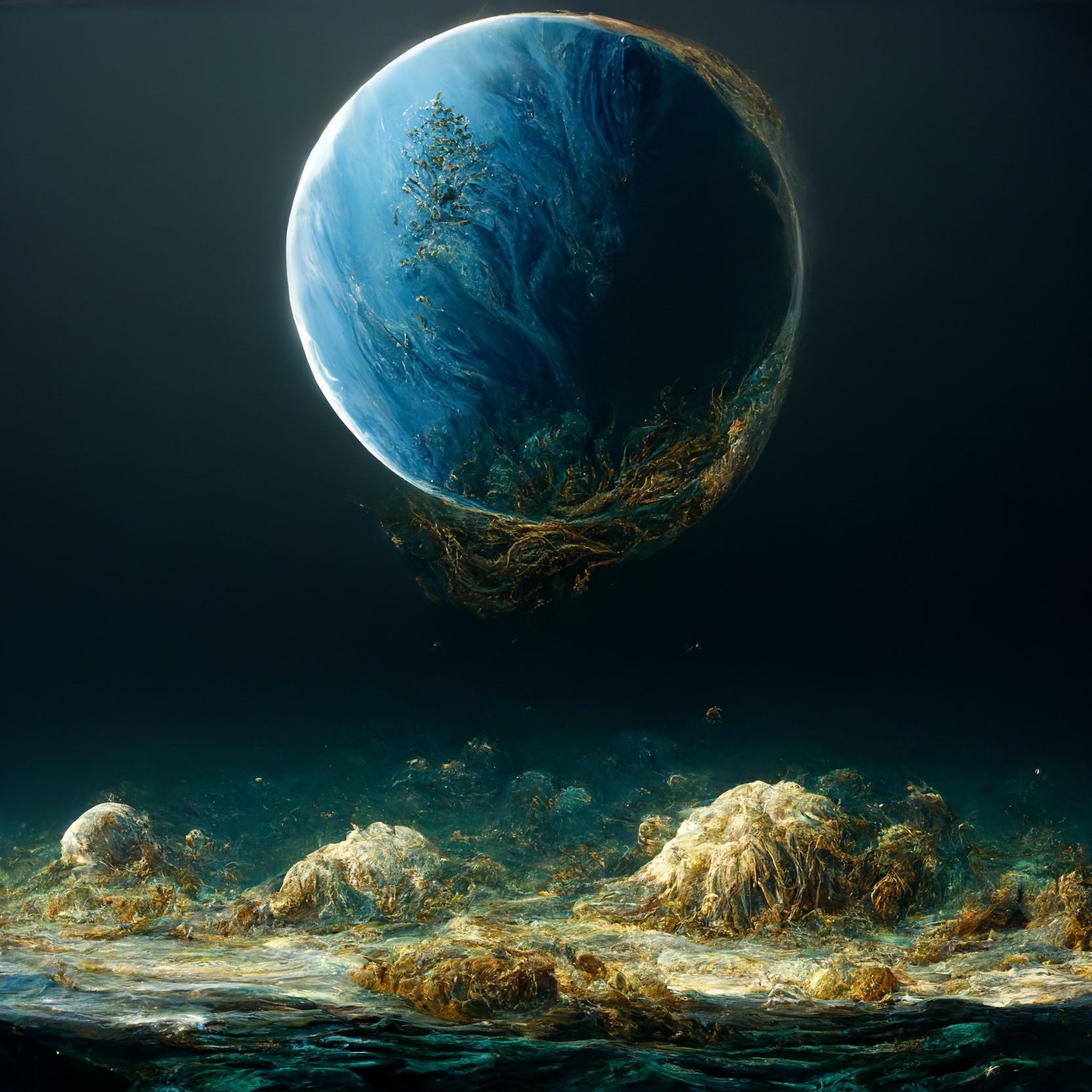Driwynn (Dreh-winn)
The home of the Drynn and the Drynnwa is a humid planet covered in 93% water.
Driwynn is locked into a tight binary system with Uralakh and they are in turn orbiting the gas giant Gilnares, as most of the celestial bodies in the star system seem to.
Geography
Driwynn is a hot, water covered world whose vast oceans make up a majority of its surface. These oceans are so deep that even though the planet has an active tectonic system, underwater volcanos rarely broach the surface to create more landmass.
There are three small continents that offer the largest landmasses on the world with millions of islands of various sizes scattered across the globe providing the rest of the dry earth available. Most of the world is subtropical with the rare alpine desert and the world does not have any ice-caps.
Ecosystem
So much of the Driwynn ecosystem is deep underwater that its estimated that only 50% of the worlds bio-diversity has been explored.
Much of the worlds environmental systems rely heavily on the ocean, a fact that the rampant pollution entering them for the last 600 years has made frighteningly apparent in recent years as the signs of some ecological collapse seem to be rising.
Ecosystem Cycles
Driwynn only has a slight axial tilt, creating a relatively flat seasonal shift with a long dry season and wet season instead of a more complex seasonal cycle. The real determiner of the cycles on the world are the powerful tidal forces the binary system the world is in creates.
The tides of Driwynn are complex as they are effected not only by Gilnares but by Uralakh, creating a cyclic period of ever increasing tides that peak whenever Urulakh and Gilnares are aligned and creating the strongest gravitational pull on the world.
Localized Phenomena
Driwynn, much like Maki-Kesuffers from storms of brutal strength and longevity. This has effected the myriad Drynn cultures across the world as storms have been known to wipe entire smaller islands off the map or cut an island chain off from the rest of the world for months or years.
Climate
The world is Subtropical for most of its surface with the equator rising to tropical levels of precipitation and heat. Most of the heat from the world comes from tectonic activity deep under its warm oceans, generated by the gravitational forces on it from Gilnares and its larger twin, Uralakh.
Fauna & Flora
The vast seascape but still relatively large landmasses has created an ecosystem that emphasizes deep sea megafauna as well as huge, drifting birds and other fauna made for floating long distances over nearly endless seas. Terrestrial creatures have only really had a chance to evolve on the major continents and trend to the smaller side with highly competitive niches.
Natural Resources
Aquaculture makes up the majority of the worlds industries, though mining of the land and deep sea variety comes a close second and the world has a robust technological industry that competes with major players in the system, hosting the headquarters of major systemwide corporations.
History
The history of this world is one of limited land and growing populations. Drynn are the primary species on the planet with Drynnwa making up a relatively tiny minority for most of its history.
Location under
Included Organizations



Comments